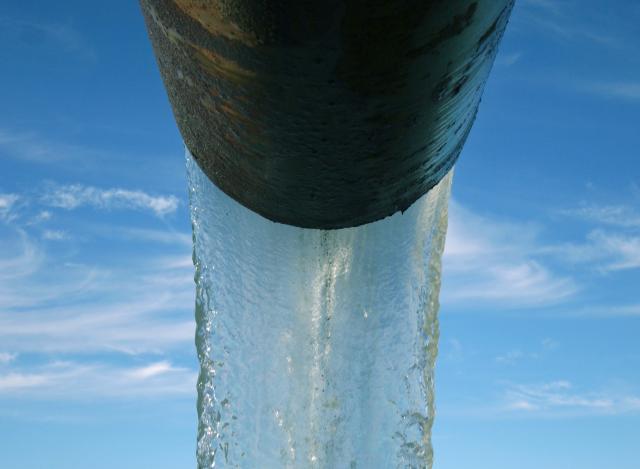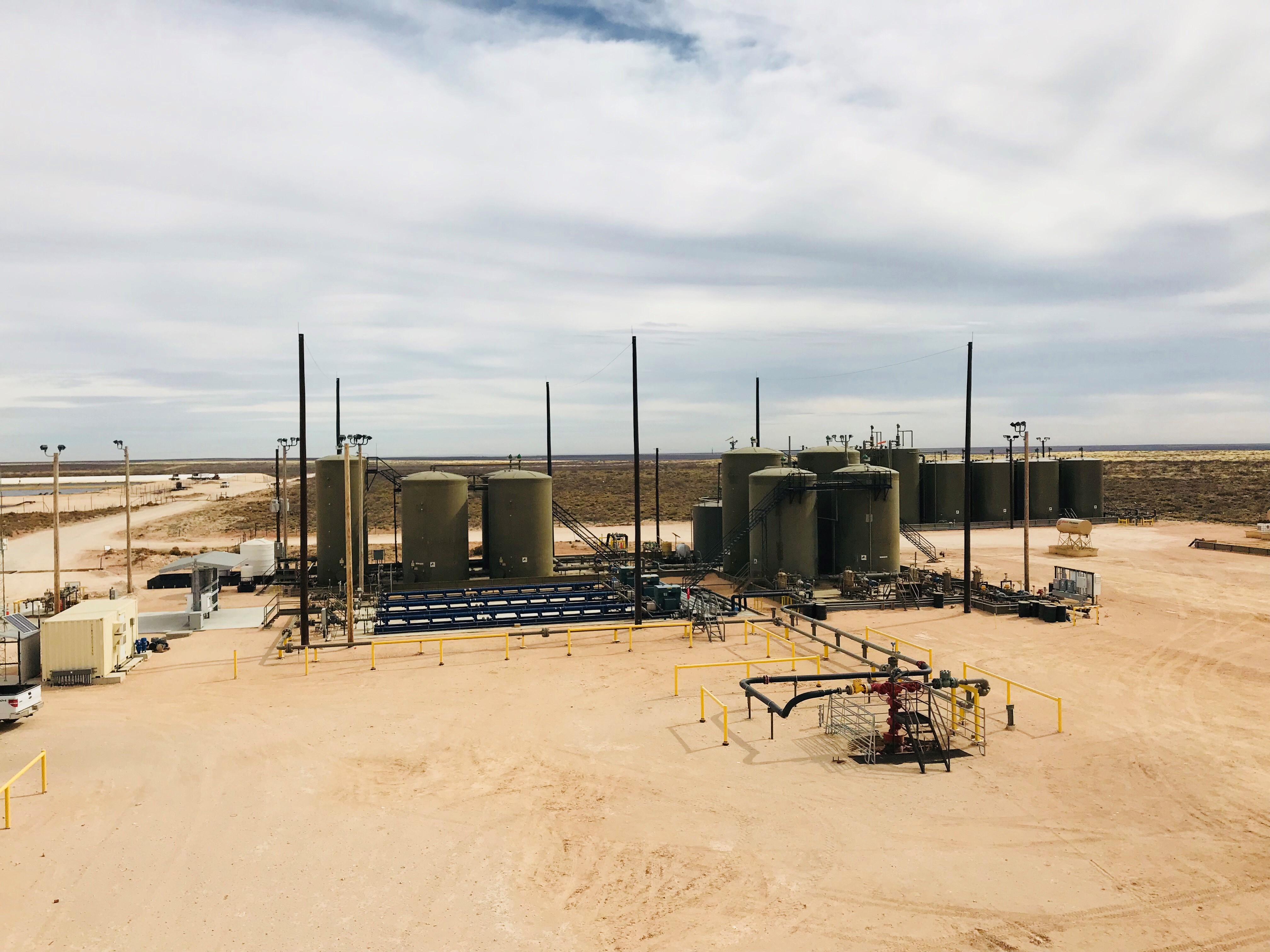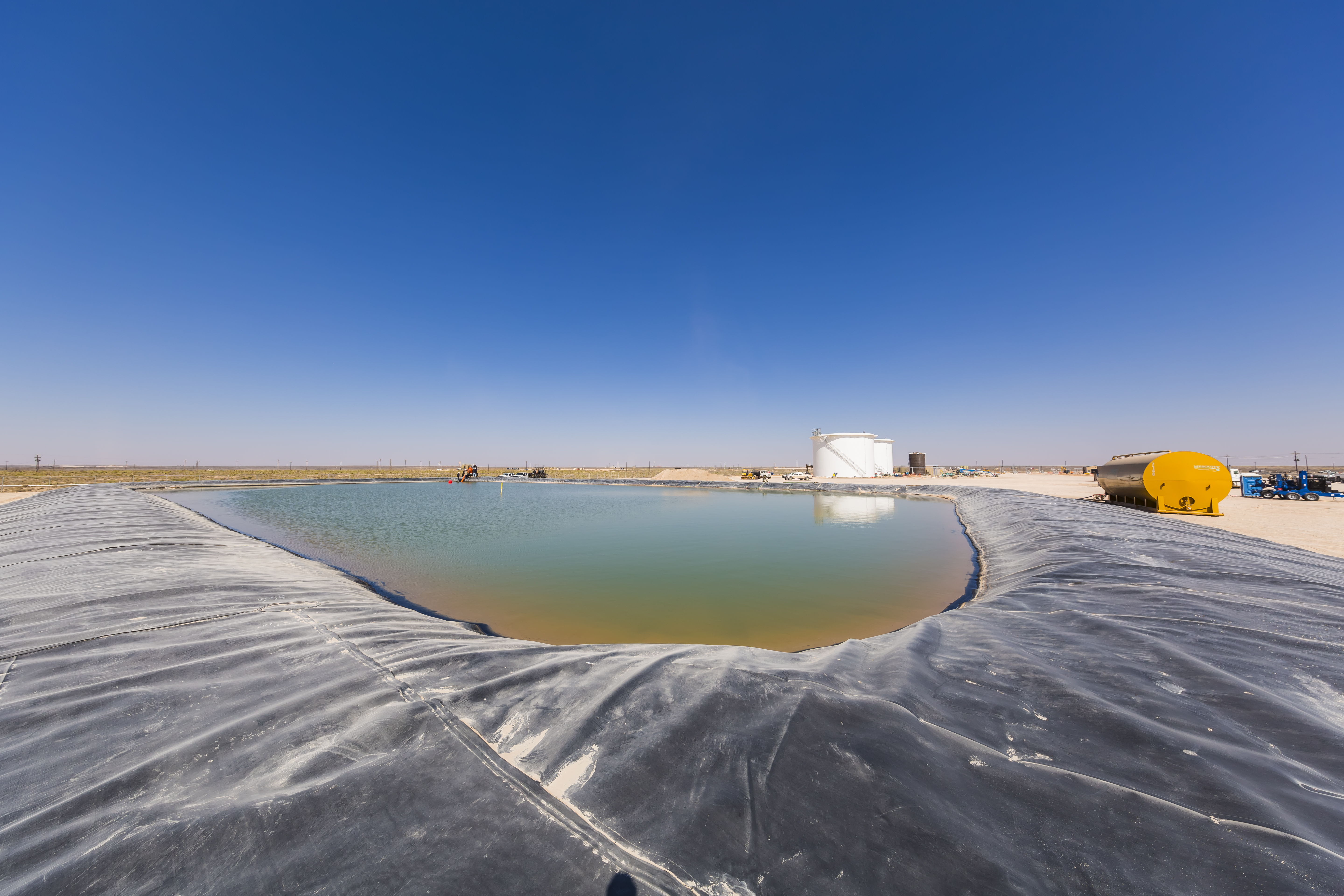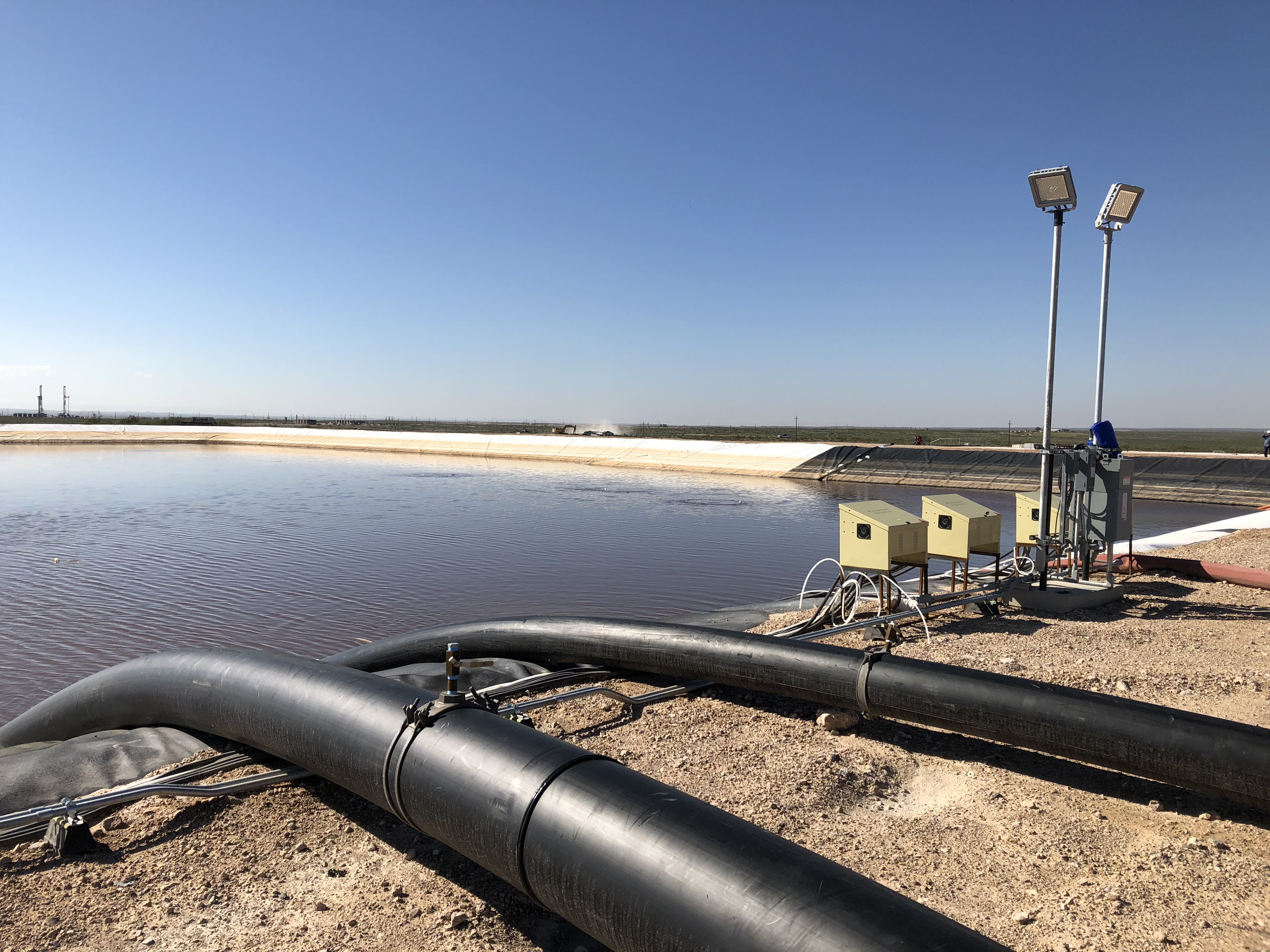
No longer just a drop in the bucket, water challenges keep the industry paddling upstream. (Source: J. Helgason/Shutterstock.com)
Editor's note: A version of this article originally appeared in E&P magazine. Subscribe here.
The business of water management in oil and gas operations has over the course of the past three years emerged as an industry unto itself for the unconventional industry. The myriad dynamics of water management—sourcing, disposal, transporting, infrastructure, recycling and reusing, to name a few—combine to create a challenge as costly and often as problematic as producing oil and gas itself. And in the offshore sector, new plays combined with new environmental regulations, and aging fields with increasing water cuts, are posing new challenges to operators.
In a report issued in January evaluating how water impacts the economics of shale development, Morgan Stanley assessed that in the Permian Basin alone, the basin’s approximate 5,500 existing wells will require about 2.75 Bbbl of water to complete. And with Morgan Stanley estimating water management costs to be about 15% of total well costs in the Permian, total spending on water in the basin is expected to double over the next five years to $22
billion, the report stated.
John Durand, who formerly served as president and COO of WaterBridge Resources and on the management team at Pioneer Water Management, said that with the recent recovery of commodity prices, water management will continue to play a critical role for operators as they determine how best to manage their capital expenses, develop their acreage positions and manage their water management requirements.
“The development of an operator’s acreage is contingent upon having a water management plan and systems in place that allow a company to keep up with the rig count that they’re trying to deploy, increase production and prove up reserves each year,” he said.
Reese Tisdale, president of Bluefield Research, said fluctuations in the market, such as those seen at the close of 2018, lead to companies taking a closer look at their costs, and water management practices are among those key expenses, particularly
if water is hard to come by.
“One thing we did learn from the 2014-2016 downturn was that a lengthy downturn heightens interest on operating costs, including water management,” he said. “As such, increasing importance will be placed on securing reliable water supplies and reclaiming flowback and produced water to get the most out of every drop.”
Water management challenges are not only present in the Permian Basin. Each major basin as well as offshore projects present their own issues, whether they are water sourcing, water handling, limited disposal options or induced seismicity issues. Operators like Equinor that explore and develop in a multitude of regions are tasked with solving compounding water management challenges.
“Every unconventional play has its own challenges and is subject to different variables such as geology, terrain, access to roads and existing infrastructure,” said Vicki Goodenow, safety and sustainability leader at Equinor North America. “Some of Equinor’s operations, like those in South Texas, exist in areas with well-developed infrastructure and significant disposal capacity. In areas such as the Appalachian Basin and Utica, there are several challenges due to terrain and limited disposal infrastructure.”
Devon, which operates in five oil-rich North American basins, has placed a priority on its water management practices such that its importance equates to that of producing oil and gas.
“Without being able to move the water, you can’t move the oil and gas,” said Zac Gaines, Devon energy marketing specialist. “At these volumes, planning for infrastructure and pipeline is necessary. It’s not just a luxury to lower LOE [lease operating expenses], it’s to flow these wells.”

Trends in unconventionals
As the water management industry continues to evolve and companies find solutions to some of the most pressing problems in the upstream sector, several trends are expected to emerge over the course of the next several months and likely into 2020. Disposal options will likely continue to be a concern, and although the Southwest has seen adequate rainfall during the past several years, the threat of drought remains high in arid locales like the Eagle Ford and Permian Basin. Meanwhile, shifting supply-and demand dynamics in the water management industry now favor landowners seeking a greater share of profits.
Brian Kuh, senior water foreman for WPX Energy’s Permian operations, said his company expects to see increased freshwater prices in both basins in which WPX Energy operates—the Permian and Williston—with demand particularly increasing in the Permian.
“Increased production, however, in the Permian also creates increased availability of our own produced water from new, larger well designs,” he said. “With this availability, WPX can reduce injection volumes and increase recycling in our Permian development areas.”

Pat Sullivan, manager of water resources for Encana’s Permian operations, explained how the emergence of a water midstream industry and the multitude of service companies that operate within it have created a competitive market landscape that ultimately will benefit operators during the next few years. Land concerns have emerged as a major consideration for operators in water management.
“Along with increased competition, the water management marketplace will continue to see a trend of surface landowners seeking a larger portion of the potential profits that the water marketplace could yield,” Sullivan said. “This could result in potential restrictions to water management for individual operators.”
Securing adequate supply for ever-increasing well completion designs and ensuring enough availability for downhole disposal are among the number of restraints facing operators in successful water management. Companies also have to consider how best to move water—via truck or pipe—while being cognizant of the environmental impacts their operations incur. One avenue that operators are pursuing is securing their needed water supply as well as disposal operations through long-term contracts with service providers.
Gaines said that although long-term contracts allow operators to secure water management services and downhole capacity, it also opens them up to financial risks should prices significantly fall during the term of the contract. He said the primary driver behind Devon’s long-term contract positioning is to ensure it has enough capacity to properly dispose of its produced water, which remains a challenge with higher producing wells.
“We’re asking third-party companies to drill SWD [saltwater disposal] wells that maybe take 30,000 barrels of water per day, and we’re producing 300,000 barrels of water per day,” he said. “The capital outlay of an SWD well is pretty significant. I’m not saying our troubles are over, but a lot of hard work was done last year in setting up our relationships with these companies, getting those contracts and firming up our infrastructure in those areas.”
Handling produced water volumes
In a recent report on water usage in U.S. hydraulic fracturing operations, Bluefield Research noted that as a result of larger well designs, produced water volumes will outpace demand for supplies, even if North American rig counts remain flat. In the Permian Basin alone, wells produce more than 15 MMbbl/d of water, according to Morgan Stanley.
“Lee, Eddy, Reeves [and] Loving counties—those top four counties in the Delaware Basin produce a ton of water like no other basin,” said Michael Dunkel, vice president, water, at Jacobs. “The life of those wells will produce more water than they use fracking.”
“The simple takeaway is that this water will need to be managed,” Bluefi eld stated in its report.
Encana’s Sullivan explained how one of the biggest challenges to his company in handling produced water is the large volumes that are brought on when their wells are initially turned on. He said high quantities of initial water volumes pose design challenges for the company’s fluid management systems.
“This almost always requires the water management team to ‘overdesign’ the system to simply accommodate the first week or two of production, and then the remaining life of that system is typically underused until a new development comes back to the general area,” he said.
Sullivan added that the challenge of offloading so much water is usually buffered by the construction of large storage facilities, which allows Encana’s water management team to find a future completions operation to send the produced water to a recycling system or pump the produced water to an injection well if there are no other outlets for it.
Brent Schroeder, production engineer for Devon’s Delaware Basin business unit, said the company has experienced exponential increases in produced water in its Delaware Basin wells, some of which he said initially flowed back about 1,000 bbl/d of water but are now flowing back up to 10,000 bbl/d of water.
“We had a lot of systems that were set up to handle those smaller volumes,” he said. “So there has been a big effort recently in increasing the size of our pipelines and getting downhole capacity, either with our own SWD wells or through third-party companies.”
Bluefield’s Tisdale added that such high levels of produced water and the costs to dispose of it will
eventually push more operators away from disposal and toward recycling.
“The water is not going to stop flowing, so management plans are imperative,” he said. “The bottom line will always be the key driver, and this is being seen in the rise of midstream water, pipeline deployments and reuse. Reuse makes sense. It was not long ago that flowback was not reused, so this will continue to grow.”
Recycling and reuse
Currently, in the unconventional water management market, hauling off produced water via trucks is still the most economically feasible method for handling flowback water, which, according to Tisdale, costs about $2.50/bbl. However, the economics are quickly changing and the costs to truck off water, depending on the basin, are increasing, he said.
“The worst has always been Pennsylvania, where trucking produced water for disposal into Ohio has driven costs into the double digits,” Tisdale said. “This has for a long time played a more significant role in reuse, which is upward of 70% in the Marcellus.”
A combination of improved water treatment capabilities, disposal well constraints and rapidly growing water infrastructure has facilitated a rapid evolution toward reuse and recycling produced water for frac operations. According to Morgan Stanley, water reuse and recycling can save more than $1/bbl in operations, reduce reliance on freshwater for fracking and alleviate future regulatory restrictions on produced water disposal.
According to Approach Resources, cost savings in the Midland Basin for using recycled water and existing infrastructures could amount to as much as $4.50/bbl. Since the spring of 2015, when Approach implemented its water recycling program, the company saved or created value of more than $7 million through the program.
“What we’ve seen over the last few years, and it’s continuing to accelerate, is water treatment and reuse companies are finding methods and technologies to reduce costs sufficiently so that reuse becomes more cost-effective with disposal, which is going to be particularly important in areas where disposal may become a more difficult proposition in the future,” Durand said.
Among the leaders in recycling and reusing produced water have been Apache Corp., Devon Energy, Encana, Range Resources, WPX Energy and Approach Resources. According to the company’s website, Range Resources has created technology to allow the company to recycle and reuse nearly 100% of water across its Pennsylvania operations.
In the Permian Basin, Apache Corp. recycled or reused about 47% of its total water withdrawals. Apache has constructed two water treatment facilities in the Permian region.
Approach Resources has constructed a 329,000-bbl water treatment facility that has allowed the company to recycle 4.6 MMbbl of produced water.
Sullivan said Encana has been experimenting with recycling its produced water for more than two years. “Only at the very end of 2018 were we comfortable enough to send 100% recycled water to a completions site,” he said.

Devon stated on its website that it was exploring opportunities to incorporate marginal-quality water into its Stack operations. The company plans to initiate recycling operations in its Wyoming operations this year. According to the website, Devon has reused 21 MMbbl of water during the past four years in the Delaware Basin in New Mexico where the company has constructed eight impoundment basins, each 15 ft deep and covering 4 acres.
“[The basins are] integral to our operations and to saving water, connected by a local pipeline network, without which we’d be hauling water that would fill about 500 trucks per day,” the company stated in a 2018 sustainability report. “We use freshwater in the Delaware only for blending and only when reused water isn’t available in sufficient quantities.”
Kuh said WPX Energy launched a large-scale recycle/reuse program last year in the Permian and constructed a large amount of gathering pipelines as well as treatment/storage facilities, which led the company to recycle more than 10 MMbbl of water during 2018.
“WPX created infrastructure to capture flowback to relieve production constraints and reduce the amount of vacuum trucks on the road,” he said. “In certain areas, we complete our wells with 100% of treated water.”

Evolving regulations
For much of the first half of the decade and, to some extent continuing through to the latter part, the oil and gas industry saw the regulatory landscape evolve to address a multitude of water management issues. Although it appears much of the dust has settled, particularly in relation to induced seismicity issues in Oklahoma, state and local agencies are keeping an eye on the effects of a rapidly evolving water management industry. Industry executives say the most substantial challenge facing the industry now is acquiring permits for produced water disposal wells.
“Recently, it has been taking longer to obtain a permit for a disposal well,” Dunkel said. “Disposal permit applications are being challenged by producing companies and other disposal well operators in the area of the proposed new well.”
Dunkel said producers might be concerned about overpressuring a disposal well and how it might impact the drilling of new producing wells.
“An operator of a nearby disposal well may be concerned about interference if the new well will be injecting into the same formation,” he said.
Equinor’s Goodenow said that if water disposal rates continue to rise, it is “very likely” that moratoriums on injection wells or permits could be pulled on a company’s assets. She added that the overall water management landscape will likely see companies become more mindful of the environmental impact of their practices.
“It is plausible to believe that regulations on freshwater usage will increase in the future as the effects of climate change will affect future policy in the industry,” she said. “Regardless of the policies, it is imperative that we continue to test new technologies to help our industry reduce our water footprint while improving the economics to do so.”
Following an increase in seismicity issues in Oklahoma related to injection wells in the Arbuckle Formation, the Oklahoma Corporation Commission enacted a plan to reduce disposal well volumes in some places by as much as 40% from 2014 levels. That measure helped reduce the number of seismic events registering 2.8 or above by 79% since 2015, according to the U.S. Geological Survey.
Although the severity and frequency of seismic events in Texas are substantially less, the industry and regulators are paying attention nonetheless.
“Clearly there are a lot of people watching seismicity in Texas,” Dunkel said. “But related, a lot of people are watching disposal formation pressures too. If you super-charge a formation, the regulator can clamp down on disposal just the same as it would for earthquakes.”
Meanwhile, the oil and gas industry scored a victory in the courts of Oklahoma in November 2018 when the state’s Supreme Court ruled in favor of the industry in a case regarding temporary produced water transportation pipelines.
In May 2018, Kingfisher County commissioners made the decision to cease issuing permits to oil and gas companies for temporary water transportation lines for anything other than freshwater. The county argued that some of the treated water being transported along temporary pipelines in county rights-of-way between completed wells and new ones was a threat to public health and safety. The county argued for the right to restrict the type of water being transported.
However, the Oklahoma Supreme Court issued an order that essentially agreed with the industry’s trade group that such authority existed only with the Oklahoma Corporation Commission.
“This was a big victory because companies were really pretty worried about that on a lot of levels,” Dunkel said. “They were worried that all of a sudden counties would start writing their own rules, and that could make things really difficult for producing companies to manage going forward.”
Mike Cook, WPX Energy’s Williston regulatory manager, said his company has experienced similar constraints in the Williston Basin pertaining to its temporary water transportation lines.
“It takes time to gain consents from landowners and to receive permission to use existing BIA [Bureau of Indian Affairs] road rights-of-way,” he said. “Routing from sources to wells starts seven months to a year before spud.”
Durand explained that each operator faces unique issues in its water management programs and practices that they continually must look to address in ways that are most cost-effective. However, many issues are often out of their control.
“Among those factors are commodity prices, regulatory practices and potential concerns regarding seismic activity in certain areas,” Durand said. “Remaining mindful of those types of outside factors will help drive better and more efficient decision-making as operators and water midstream service providers work in collaboration with one another, all while doing so in the most environmentally and socially conscious manner possible.”
Offshore trends
While the unconventional industry works its way through a fledgling water midstream industry, a re-emergent offshore sector faces its own challenges as new plays like Guyana and Suriname develop. Along with those plays and new projects in some of the world’s workhorse fields, evolving environmental regulations pose new challenges to traditional water management practices and give rise to new issues.
When managing the water produced along with hydrocarbons and the decision to either reinject that water into reservoirs for disposal or for waterflood, or treat it and discharge it into the sea, operators consider both the reservoir dynamics and the economics between the two, said Keith Birch, global executive for produced chemicals at Suez.
Birch said the majority of projects that Suez recently has worked with are for reinjection.
“We’re seeing quite a wide variation in the quality of water that operators want, particularly for the reinjection aspect,” he said. “There doesn’t seem to be any real consensus across the industry as to what level of suspended solids is acceptable, what size of suspended solids is acceptable and what level of oil contamination is acceptable.”
The problem is compounded when combined with operator concerns about inorganic content and compatibility issues when mixing seawater with produced water, he said.
One of the drivers behind an increase in reinjection practices has been increasing regulator pressure not to discharge produced and treated water into the sea, Birch said.
“Often reinjection is the only option operators have available to them,” he said. “That being said, the majority of new offshore projects are tending to conduct water injection anyway.”
Space availability on offshore platforms is always a concern, and that’s no less true for water management topside equipment. In a Center for Petroleum and Geosystems Engineering study evaluating produced water management in offshore Gulf of Mexico, author Mukul Sharma suggested the seafloor separation coupled with subsurface injection of produced water for waterflooding “is an excellent disposal strategy.” Sharma wrote that such a process helps minimize the cost of treating produced water, disposes of the water in a cost-effective and environmentally benign manner and provides a resource to recover additional oil.
The problem is particularly evident in existing installations for older fields, Birch said.
“As the field ages, you get more water,” he said. “And that places more pressure on the primary separation equipment and any secondary water treatment system.”
Birch identified three primary challenges to offshore water management: increased water cut for older developments, the need for improved monitoring, and tightening environmental constraints.
“One of the environmental constraints that has been applied is the focus on visible oils and dispersed oils,” he said. “There will be more and more focus around the removal of visible, separable hydrocarbons and also the removal of soluble compounds as well.”
Read E&P's other 2019 Water Management Techbook articles:
KEY PLAYERS:
Companies Focus on Replacing Freshwater Sources
These 40 companies are representative of some of the key players in water management.
TECHNOLOGY:
Innovation, Ingenuity Drive Changes in Handling Produced Water
New technology is needed to get the most out of one of Earth’s most precious resources.
MIDSTREAM:
Full Immersion: Industry Gets Religion on Produced Water
Volumes could reach 50 MMbbl/d in just the Permian; all options are on the table.
Recommended Reading
Wayangankar: Golden Era for US Natural Gas Storage – Version 2.0
2024-04-19 - While the current resurgence in gas storage is reminiscent of the 2000s —an era that saw ~400 Bcf of storage capacity additions — the market drivers providing the tailwinds today are drastically different from that cycle.
Biden Administration Criticized for Limits to Arctic Oil, Gas Drilling
2024-04-19 - The Bureau of Land Management is limiting new oil and gas leasing in the Arctic and also shut down a road proposal for industrial mining purposes.
SLB’s ChampionX Acquisition Key to Production Recovery Market
2024-04-19 - During a quarterly earnings call, SLB CEO Olivier Le Peuch highlighted the production recovery market as a key part of the company’s growth strategy.
PHX Minerals’ Borrowing Base Reaffirmed
2024-04-19 - PHX Minerals said the company’s credit facility was extended through Sept. 1, 2028.
Exclusive: The Politics, Realities and Benefits of Natural Gas
2024-04-19 - Replacing just 5% of coal-fired power plants with U.S. LNG — even at average methane and greenhouse-gas emissions intensity — could reduce energy sector emissions by 30% globally, says Chris Treanor, PAGE Coalition executive director.





